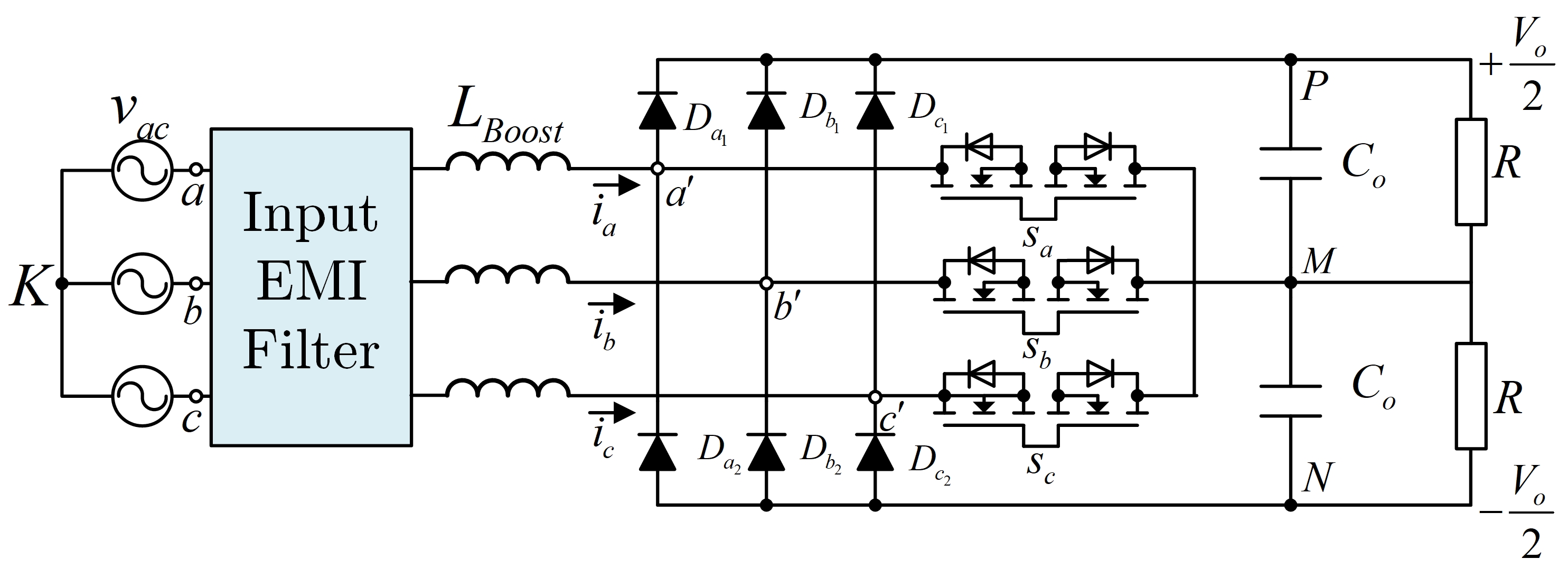LIBRARY
Multiobjective Design and Optimization of a Vienna Rectifier with Parametric Uncertainty Quantification

The Pareto front concept has been carried out in multiobjective design and optimization of power electronics converters to realize the performance limit relationship and determine the final optimum design point. The final design selection is based on deterministic modeling and simulation using the nominal value of system parameters. Manufacturing variability, however, introduces a tolerance to different parameters of each component. Depending on the robustness of the selected design, actual performance of the converter prototype could vary from the predicted performance using the multiobjective optimization approach.
In this paper, a sensitivity index is introduced as a new performance measure. This is in addition to the conventional performance measures such as efficiency, size, weight, cost, etc., to select the final design with the highest robustness in the presence of manufacturing variability, also known as parametric uncertainty. This paper presents a multiobjective design and optimization with built-in parametric uncertainty quantification. The proposed optimization approach is utilized to design a robust, high-efficiency Vienna rectifier for given dimensions while considering specific design constraints and operation requirements. The final design is realized by exploring the system loss size sensitivity Pareto front of the enhanced performance space, where the parametric sensitivity of each design point is used to discern between cases and help identify the most parametrically robust of the Pareto-optimal solutions. The converters built, based on this selected robust Pareto-optimal design, are expected to have the least variability in their performance measures, compared with those based on other design points with similar performance measures, but higher sensitivity indices.






















































































